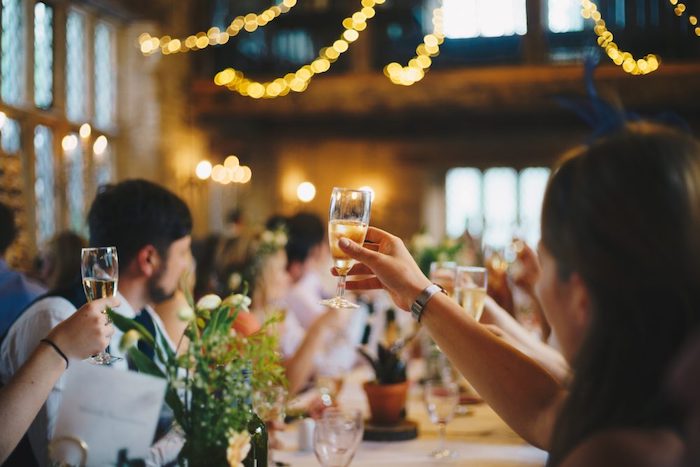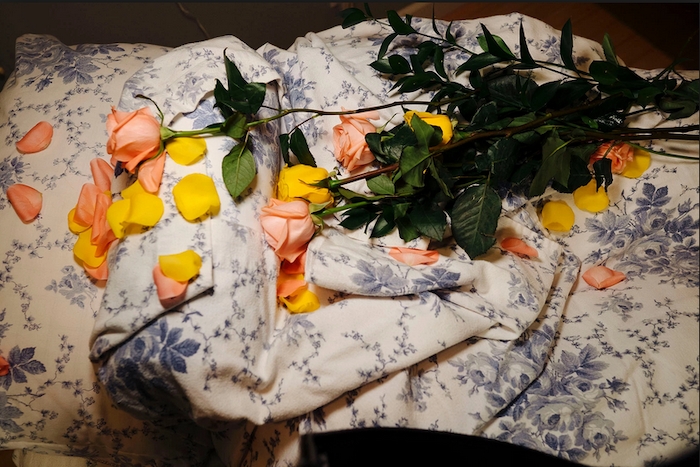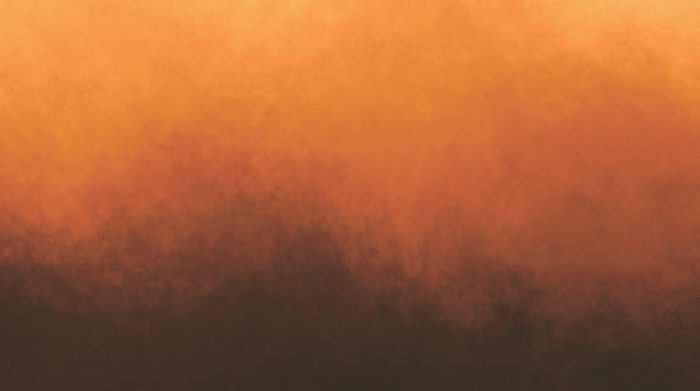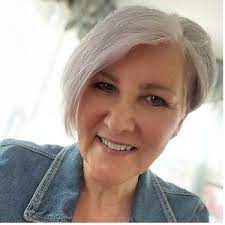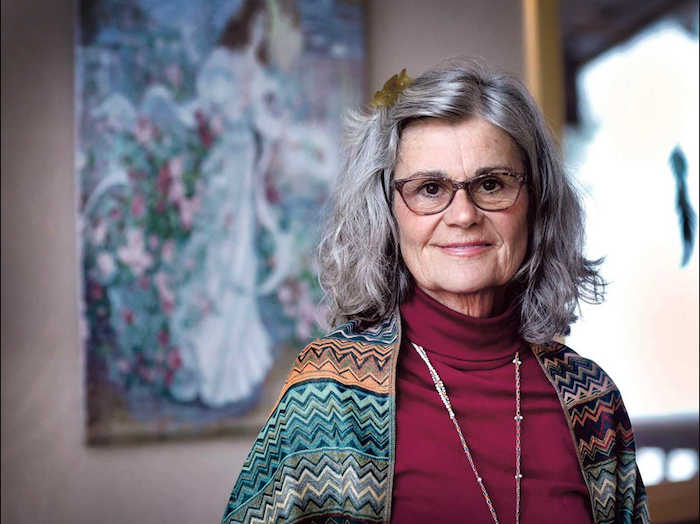— Overcoming Our Fear of Death

Enduring, accepting, and embracing the inevitability of one of mankind’s greatest fears.
By Jocelyn Tatum
On my desk at home, I have a true-to-life-sized concrete sculpture of a skull with little porcelain bluebirds resting on its mouth, ears, eyes, and one on its crown. I found it at ArtsGoggle in Fort Worth 13 years ago when the local arts festival was just starting out. I gravitated toward it because it reminded me how fleeting and fragile life can be. The birds, to me, represented the creativity that comes forth in the face of our finitude. The idea was that this mortal reminder would help me get past writer’s block. After all, as a journalist, these stories are not my own. They are your stories. I am merely the vessel who delivers them using my passion and acute sensitivity to humanity. And I borrowed this idea from 14th-century monks who kept skulls on their desks as a reminder of their mortality as they wrote their philosophical dissertations, so this idea wasn’t new. “For dust you are, and to dust you shall return.” Sounds familiar, right? This symbol of death on my desk was a reminder to face my fears head on, and that I am just passing through this world, adding my thread to the massive tapestry that is the story of all us.
I have always thought of myself as a pilgrim. Just passing through. The joys in life like my son, friendships, or romantic partners are merely finite gifts lent to me from the universe, never mine to keep or clutch. I have found that the pain is in the clinging to life or avoidance thereof, whether it is my own or another’s. Peace and serenity lie somewhere in the middle. Everything temporal, everything passing. Life doesn’t have to be so serious, and I think my journey exploring my own non-imminent death has reminded me of this. When achieved, this allows me to live with a free spirit and detachment to the things that weigh me down. And as things have gotten heavier for me lately with my father starting palliative care for his cancer and the loss of a great love in a breakup, I decided it was time to stare death and grief boldly in the face.
Two Fort Worth women just launched their business, The Art of Dying, in January 2023 after completing their death doula training. When I came across their Instagram (@theartofdyingfw), I became curious. Very curious. So, I kept digging. It turns out that a death doula is like a birth doula but assists with the process of dying. They are an end-of-life companion who can guide the dying, whether that is connecting them to a number of resources or inspiring ideas for how to celebrate the life they have left. “The Art of Dying [is a] small collective that offers support, celebration, and companionship to individuals and their loved ones through the end of life.” They offer services for those who have a terminal diagnosis or those who want to plan early in life and are non-imminent.
These end-of-life practices have been steadily growing since the pandemic, according to Alvin Harmon, the head of the National End-of-Life Doula Alliance on an NPR news segment that aired Jan. 17. “How people died, that was what became important, having that safe space, that whole space, people dying in a manner that felt safe to them and was important to them,” Harmon said on air. Any little dignity people had left when dying was stripped of the dying during the isolating loss of COVID-19. This phenomenon led Fort Worth’s Lacy Buynak to get her death doula training. She lost her grandmother during the pandemic.
“As I was grieving her death, I was having this huge collective grief for all of these people who didn’t get that,” she says as tears form in the corners of her eyes. “I started thinking that that has got to be one of the worst ways to go.” She got to say goodbye to her one last time before she died but realized so many others did not have this experience.
Now business partners in all thing’s death, Buynak and Taykor Bell had been friends since attending school together in 2001. Twenty years later, in April 2021, Buynak called Bell to catch up. They had been talking about something else when Buynak said, “I did a crazy thing. I signed up for a training program to be a death doula.” She remembers getting a “holy-shit, so-did-I”-type of response.
The two had been keeping an ear on the heartbeat of death for years as a separate fascination while a parallel nationwide phenomenon of making death more palatable, eco-friendly, meaningful, and even enjoyable was disrupting the $20 billion funeral industry, which celebrity mortician death advocate Caitlin Doughty argues exploits people’s grief and turns it into a profit. After their own experience with death, Buynak and Bell saw a need to provide a comprehensive and holistic service in Fort Worth that also educates the community one death at a time. “We want to hold space for people in those moments. Raising awareness for collectivism, the practice or principle of giving a group priority over an individual, for being there for people,” Bell says.
Bell had her first existential crisis in grade school. She thought about dying and going to heaven and thought, “That is forever.” Her mind kept seeing “road barriers” to this thought of permanence, and anything past that scared her (to death). She couldn’t understand forever. For her, something so big and unknown brought up this debilitating fear. She knew then that death would be her biggest teacher, and her training for this vocation is her life experience. Not only has she read many books over her 40 years alive, but she was able to be there for her mother as she was dying in a way that she would want someone to be there for her. It occurred to her that many people die in the most isolated and sterile way in the U.S. even before the pandemic.
“The vision is to put ourselves out of business to remind our culture to do this for each other. This is a business needed more than ever. There are so many ways people can feel vulnerable and alone, and death is when that is most poignant,” Bell says.
This year marks the 10th year since Bell’s mother died of adrenal cancer. The story gave me chills. When Bell decided to leave her current career, she looked at the amount of money her mother left her, an account she was hesitant to touch because it was the last lifeline to her mom, and it was the exact amount she needed to get her death doula training. Then Buynak called.
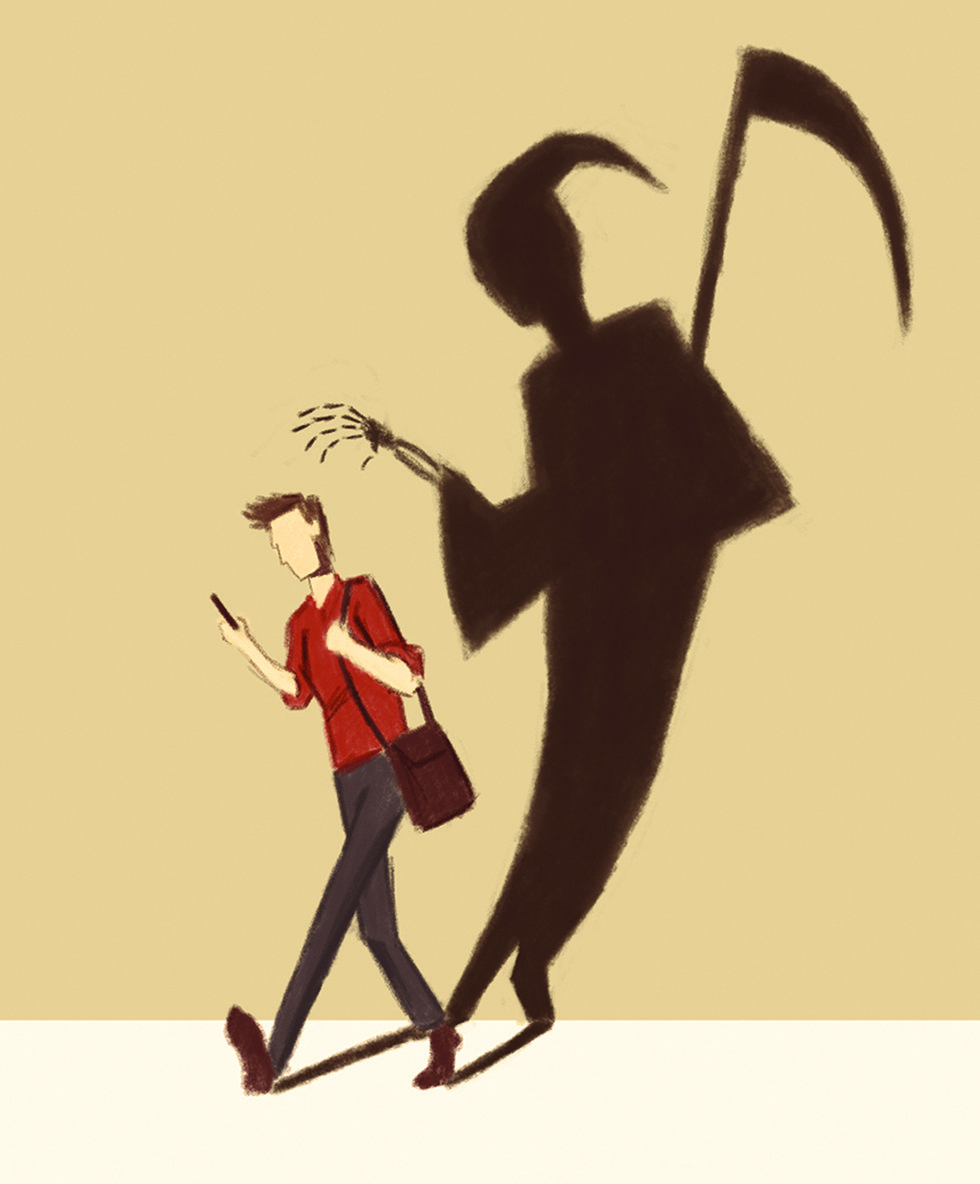 Illustrations by Brandon Hayman[/caption]
Illustrations by Brandon Hayman[/caption]
My Journey
I met with Bell and Buynak for sparkling tea at Leaves Book and Tea Shop in Fort Worth’s SoMa district. They had a big biodegradable binder waiting for me on the table with their logo on the front. Page 1: “In this binder, you will find a comprehensive list of legal documents to gather, logistics and arrangements to consider, as well as various comfort and care services you may be interested in learning more about.”
Section 1, “Legal: Advance Directive, Durable Power of Attorney, Last Will and Testimony.” This is definitely the least enjoyable part of the process. I went to the websites, which was about what I expected from government sites. Then I had to download a bunch of PDFs to print, fill them out, and then take them to be notarized. Then file them. Bell recommended using RocketLawyer (not a shameless plug) unless you have some massive estate to work through.
Not going to lie, this part made me feel uncomfortable. Itchy. It asks a lot of questions that I really don’t feel like I know the answers to yet. And when it got to the body disposition authorization that included some subtext about whether your body remains are acceptable if you want to donate it to science, I had to step away and get some fresh air. “So you’re saying my body could be rejected even after I die?” I thought.
“We want people 40 and younger to get their [act] together. It can be sad, confusing, and beautiful,” Bell told me regarding the Art of Preplanning, a service they offer to those who get their affairs in order even if death isn’t imminent.
Well, I do not have my act together. And I am not going to lie, this has brought up some feelings. So, I decide once more to procrastinate on the legal paperwork, which Bell and Buynak have both said I need to knock out first because something can happen to us at any moment. Digging into the resistance, I redirected my efforts into research about how to overcome this fear. What I found brought me peace beyond what I could have ever expected.
Overcoming Fears
“The cave you fear to enter holds the treasure you seek,” said 20th century author Joseph Campbell.The New York Times reported a phenomenon in an article titled “South Koreans, Seeking a New Zest for Life, Experience Their Own Funerals” where people choose to face their mortality. “After an instructional lecture and video, participants are led into a dimly lit hall decorated with chrysanthemums, where they sit, often tearfully, beside caskets and write their last testaments. Then they put on burial shrouds and lie down in the coffins,” the article reports. What surprised me is many participants photographed were young and healthy with no end in sight, but some had a terminal illness and wanted to prepare while others struggled with suicidal thoughts and wanted to put those to rest. They reported emerging from their mock funerals and meditations around death with a new and hopeful perspective on life.
Buddhist monks contemplate images of decaying bodies to unlock the door living in the present and letting go of fears. “It makes disciples aware of the transitory nature of their own physical lives and stimulates a realignment between momentary desires and existential goals. In other words, it makes one ask, ‘Am I making the right use of my scarce and precious life?’” Arthur C. Brooks wrote in an op-ed piece for the NYT.
Guided meditations on mortality such as this can be one of many life-affirming activities that can give us a new take on life, according to the resourceful website orderofthegooddeath.com. The website is an endless resource for all things death with everything from how to have conversations about it to how to have an affordable and intimate funeral at home. It was created by YouTube star, mortician, former cremator, and best-selling author of the memoir Smoke Gets in Your Eyes: And Other Lessons from the Crematory, Caitlin Doughty. In an interview on a segment on “CBS Sunday Morning,” Doughty says, “Americans need to think more about end-of-life rituals, instead of keeping death at a distance.” Her advocacy around changing the way we die and think about death has started a movement across the country. “They are just of the belief that the more we talk about it openly and honestly, the less terrifying it needs to be,” the “CBS Sunday Morning” reporter narrates. Doughty’s more recent book, From Here to Eternity, illustrates how death is handled in a more meaningful and intimate way in cultures across the world. What does it mean to have a good death? Is it not to be so separated and detached from the process, to stop looking away?
Doughty even offers a course, complete with videos, lessons, and guided meditations for the price of $195, called Mortal that gives patrons the tools for facing death. Lessons with titles like, “I create my own meaning,” “I meet my true self on my deathbed,” and “There are parts of my death I can control,” help people better cope.
It made me think, why do we wait until the end to start celebrating life? Why do we wait until we are at our rock bottom, when life strips us of everything that we think validates us as humans, to start living in the way we were always meant to?
Ironically, facing death and working with death doulas like Matus and Buynak helped me release the inhibiting fear of loss and to rethink the way I live. And I have been able to show up differently around my father’s terminal cancer. I don’t need to look away, nor do I need to fix it. I can just be with him in it. It puts me at ease to know there is a slew of tools and support out there.
When I was little, I had a fear of being eaten by a monster and dying. I would lie in bed each night staring at the closed closet door waiting for it to open at any time to claim my life. One night, I had the thought, “What is actually in there?” I got up and looked. Nothing was in there, and I started sleeping through the night again. Peace ensued, and a nascent lesson was learned — the pain was in the resistance, the looking away.
American Poet Andrea Gibson’s YouTube video went viral after she famously shared her story about how her cancer diagnosis transformed her lifelong debilitating fear of death into “boundless bliss.” Once she learned that her whole torso was filled with masses, she said she felt her heart immediately begin to open up. She now walked through the world realizing that she may not be here tomorrow, which pushed her deep into the present moment. The paradox is that facing death cured her fear of death. “Why would I waste my time not in search of the celebration [of life] and not in search of awe? There has been so much love this year that I believe legitimately everything is on my side, and I believe death too, is on my side. And the second I realize that death itself is on my side, I felt like nothing could kill me,” Gibson says in an interview.
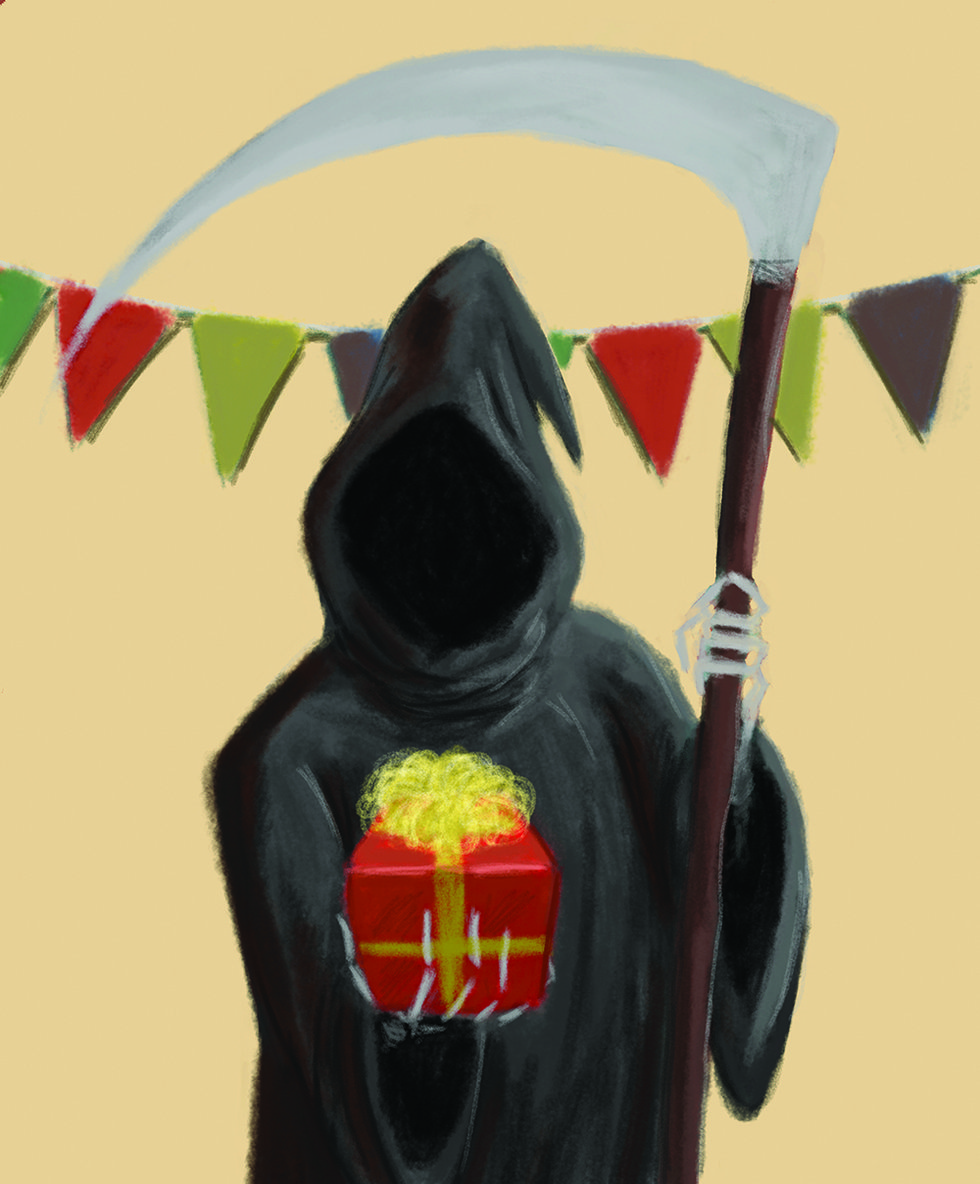 Illustrations by Brandon Hayman[/caption]
Illustrations by Brandon Hayman[/caption]
The Dying
“It is the most supremely interesting moment in life, the only one in fact when living seems life,” wrote Alice James — William and Henry James’ sister — as she faced death.
Whenever I experience some tragedy in life that brings me to my knees, there is also a death to my “self” that happens, which then strips away my ego. All spiritual transformations and religious conversions speak of this. Nature does too after a roaring forest fire burns thousands of years of story to only be reborn in new growth that is stronger. I have to ask myself, is the key to a more meaningful and deeper life usually comes after facing death, figuratively or literally? “All life is lived in the shadow of its own finitude, of which we are always aware — an awareness we systematically blunt through the daily distraction of living. But when this finitude is made acutely imminent, one suddenly collides with awareness so acute that it leaves no choice but to fill the shadow with as much light as a human being can generate — the sort of inner illumination we call meaning: the meaning of life,” Maria Popova of The Marginalian n wrote in an essay.
I watched the movie “Marcel the Shell” the other day, and at the end, the main character, Marcel, reflects on a great loss, the loss of his beloved grandmother, Connie, also a shell played by Isabella Rossellini. Before Connie dies, she led Marcel to a quiet place to perch in the basement where the window was always cracked. There the wind blew through Marcel’s shell creating a new sound, a new experience. In the face of loss, Marcel experiences the meaning of life. “It connected me, I felt, to everything. Because if I wasn’t there, the sound wouldn’t exist, and I felt like everything was in pieces, and I stood there and suddenly we were one large instrument. I like to go there a lot because it reminds me that I am not just one separate piece rattling around in this place, but that I am a part of a whole. And I truly enjoy the sound of myself connected to everything,” Marcel says.
Just before she dies, Connie reads the poem “The Trees” by Philip Larkin.
The trees are coming into leaf
Like something almost being said;
The recent buds relax and spread,
Their greenness is a kind of grief.
Is it that they are born again
And we grow old? No, they die too,
Their yearly trick of looking new
Is written down in rings of grain.
Yet still the unresting castles thresh
In full-grown thickness every May.
Last year is dead, they seem to say,
Begin afresh, afresh, afresh.
We tend to look at death as a failing of our bodies (or minds) when it is a natural part of living, of returning, of renewing. Experiencing death is one of the few things all humans have in common, which makes it a thing that connects us in our humanity like the wind in Marcel’s shell. I learned many lessons planning my death with The Art of Dying’s Buynak and Bell. Lesson 1: When that wave of grief hits, whether it is losing my father to cancer, my boyfriend to a breakup, or facing the end of my own life, I can’t swim against the current. I shall surrender to the fear and pain and fall back into the healing water until that final wave washes me ashore.
Lesson 2: To start living as if it could all end tomorrow and work with the doulas to plan a dinner party with my favorite people complete with toasts and convivial conversations about dying, loss, bucket lists, and to celebrate life.
Complete Article ↪HERE↩!
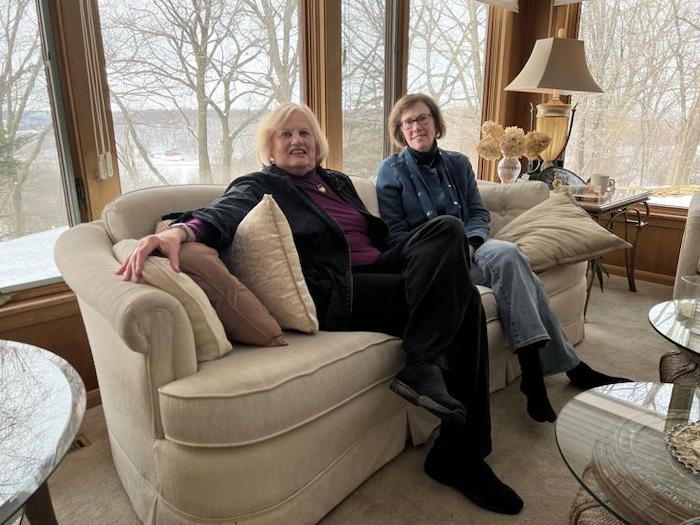


 Illustrations by Brandon Hayman[/caption]
Illustrations by Brandon Hayman[/caption] Illustrations by Brandon Hayman[/caption]
Illustrations by Brandon Hayman[/caption]